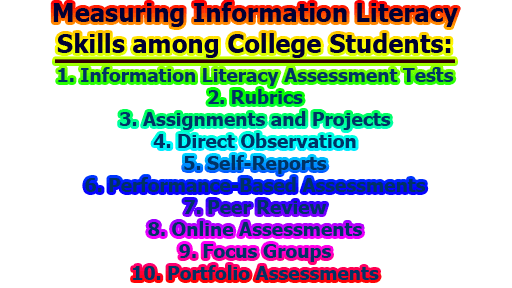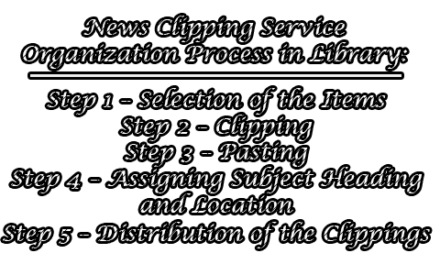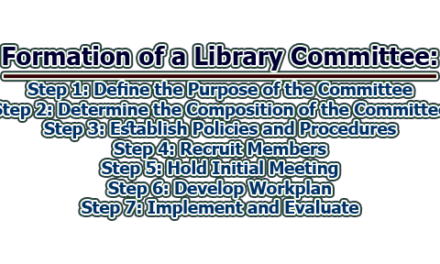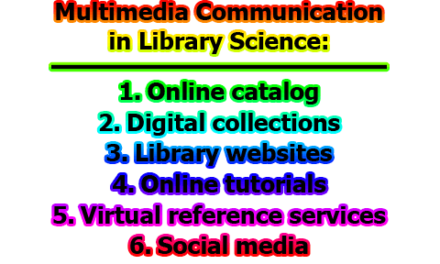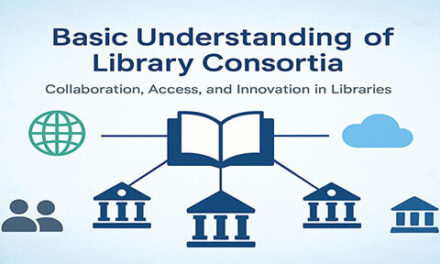Information literacy is an essential aspect of contemporary education as it enables students to locate, evaluate, and effectively use information. As the world is moving towards a knowledge-based economy, the importance of information literacy skills among college students cannot be overemphasized. The ability to critically analyze and use information for solving complex problems is a necessary skill that students need to possess to succeed in their academic and professional lives. This article will explore Measuring Information Literacy Skills among College Students.
What is Information Literacy?
Information literacy is the ability to locate, evaluate, and effectively use information. It involves critical thinking, problem-solving, and decision-making skills. An information-literate individual understands how to access, evaluate, and use information ethically and legally. It is an essential skill for college students as they are required to complete assignments, research papers, and other academic projects.
Importance of Information Literacy Skills among College Students:
Information literacy skills are essential for college students for several reasons. First, it helps them to become independent learners. With information literacy skills, students can independently locate information relevant to their studies, evaluate its credibility, and use it to enhance their understanding of the subject. It also helps them to develop critical thinking skills as they learn to analyze and synthesize information from different sources. Additionally, information literacy skills are crucial for students’ future careers, as they will be required to access and use information in various professional settings. Finally, information literacy skills promote ethical and responsible behavior when using information, as students learn about plagiarism and how to avoid it.
Measuring Information Literacy Skills among College Students:
Several methods can be used to measure information literacy skills among college students. These methods include:
1. Information Literacy Assessment Tests: Information literacy assessment tests are standardized tests used to measure the information literacy skills of students. These tests can be administered online or in person and typically consist of multiple-choice questions. Examples of information literacy assessment tests include the SAILS test (Standardized Assessment of Information Literacy Skills) and the iSkills assessment.
The SAILS test measures students’ ability to access, evaluate, and use information effectively. It includes questions on topics such as evaluating sources, citing sources, and understanding copyright laws. The iSkills assessment focuses on measuring students’ ability to locate, evaluate, and use digital information effectively. It includes questions on topics such as search strategies, evaluating websites, and using digital tools to organize information.
2. Rubrics: Rubrics are scoring tools used to assess a student’s performance on a specific task. They provide a clear and specific set of criteria for evaluating a student’s work. Rubrics can be used to assess students’ information literacy skills by including criteria related to information literacy. For example, a rubric for a research paper could include criteria such as the use of credible sources, proper citation format, and evidence of critical thinking skills.
3. Assignments and Projects: Assignments and projects can also be used to measure students’ information literacy skills. These assignments can include research papers, annotated bibliographies, or presentations. By evaluating the quality of students’ work, instructors can assess their ability to locate, evaluate, and use information effectively.
4. Direct Observation: Direct observation involves observing students’ behavior in the classroom or library while they are conducting research. By observing students’ search strategies, source selection, and citation practices, instructors can gain insight into their information literacy skills. Direct observation can also be used to provide feedback and guidance to students as they conduct their research.
5. Self-Reports: Self-reports involve asking students to reflect on their information literacy skills. This can be done through surveys or interviews. Students can be asked to rate their confidence in their ability to locate, evaluate, and use information effectively. Self-reports can provide insight into students’ perceptions of their information literacy skills and can be used to identify areas where they need additional support and instruction.
6. Performance-Based Assessments: Performance-based assessments require students to complete a specific task that demonstrates their information literacy skills. For example, students could be asked to create an annotated bibliography or develop a research proposal. These assessments provide a more authentic assessment of student’s ability to apply their information literacy skills to real-world scenarios.
7. Peer Review: Peer review is another effective method for measuring information literacy skills. Instructors can ask students to peer-review each other’s research projects, essays, or other assignments to evaluate their ability to apply information literacy skills. This method not only provides an additional evaluation of students’ skills but also enhances their learning by providing opportunities for constructive feedback and collaboration.
8. Online Assessments: Online assessments, such as quizzes, exams, and surveys, are also commonly used to measure information literacy skills among college students. These assessments can be designed to test students’ knowledge of specific concepts, terminology, and skills related to information literacy. Online assessments can be easily administered, graded, and analyzed, making them an efficient and effective method for measuring information literacy skills.
9. Focus Groups: Focus groups can provide valuable insights into students’ information literacy skills and their attitudes toward information literacy instruction. Instructors can organize focus groups with students to discuss their experiences with information literacy instruction, their perceived strengths and weaknesses in information literacy, and their suggestions for improving instruction. Focus groups can provide qualitative data that can complement quantitative data obtained from other assessment methods.
10. Portfolio Assessments: Portfolio assessments allow students to showcase their information literacy skills by collecting evidence of their learning over time. Students can include research papers, annotated bibliographies, literature reviews, and other assignments that demonstrate their ability to locate, evaluate, and use information effectively. Portfolio assessments provide a comprehensive evaluation of students’ information literacy skills and their ability to apply them in various contexts.
In conclusion, information becomes increasingly abundant and complex, information literacy skills become increasingly crucial for success in academic, professional, and personal contexts. Therefore, measuring information literacy skills among college students is not only important for assessing the effectiveness of instruction but also for preparing students for their future careers and roles as informed citizens. By prioritizing information literacy education and measuring students’ skills, instructors can ensure that their students are well-equipped to navigate the information landscape and make informed decisions in a rapidly changing world.
References:
- Association of College and Research Libraries. (2016). Framework for Information Literacy for Higher Education. American Library Association.
- Bruce, C. S. (2017). Seven faces of information literacy in higher education. World Library and Information Congress: 83rd IFLA General Conference and Assembly, Wrocław, Poland.
- Catts, R., & Lau, J. (2008). Information literacy: What’s in it for employers? Australian Library Journal, 57(1), 11-22.
- Lau, J. (2016). Measuring information literacy skills in higher education. Journal of Information Literacy, 10(1), 3-17.
- Nicol, D. J., & Macfarlane‐Dick, D. (2006). Formative assessment and self‐regulated learning: A model and seven principles of good feedback practice. Studies in Higher Education, 31(2), 199-218.
- Soria, K. M., Fransen, J., & Nackerud, S. (2013). Library use and undergraduate student outcomes: New evidence for students’ retention and academic success. Portal: Libraries and the Academy, 13(2), 147-164.
- Tewell, E. C. (2015). A decade of information literacy assessment: A review of the literature. Communications in Information Literacy, 9(2), 24-43.

Library Lecturer at Nurul Amin Degree College

